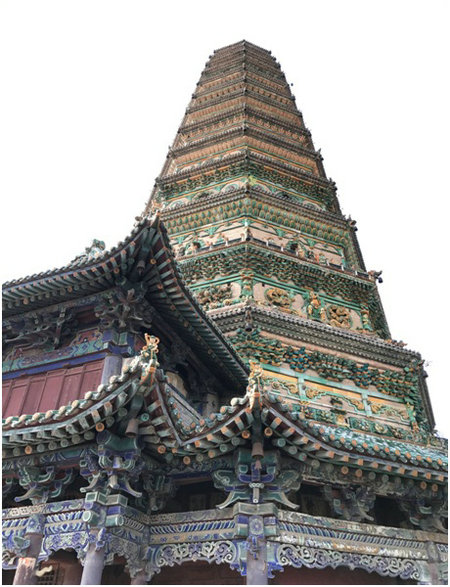RESOURCES
2017-08-15 source:chinadaily
|
|
|
It was a legendary military mission that saved priceless treasures from destruction and looting.
Chinese soldiers' bravery during the War of Resistance Against Japanese Aggression (1931-45) preserved the 900-year-old Buddhist canon, the Zhaocheng Jin Tripitaka.
The largely intact texts-the most-extensive surviving printed works of the Jin Dynasty (1115-1234)-are one of the National Library of China's four main collections.
The Beijing library revealed the findings of a July investigation into the scriptures' hidden history last week.
An expert panel journeyed through six cities in northern Shanxi province to piece together the puzzle of the texts' legacy. They pored over local archives, visited relevant sites and conducted interviews.
The precious Buddhist canon was originally collected by the Guangsheng Temple in Zhaocheng county (today's Hongdong county) in Shanxi.
It remained there for centuries until it was rediscovered in 1933 by a high-ranking, visiting monk. It took its current name at that time.
|
|
|
Monks had placed it in a sealed part of the temple tower.
Occupying Japanese forces visited the temple on the pretense of attending a ritual and tried to open the tower to steal the sutras in 1942.
The Eight Route Army led by the Communist Party of China sneaked through the Japanese blockade and spirited away the texts a night before the ritual. The soldiers stored the scriptures in coal mines and caves when Japanese forces scoured the area later.
Li Wanli is the son of the late Li Weilue, the commander who orchestrated the rescue operation.
He has collected historical files related to the Zhaocheng Jin Tripitaka for about 30 years and joined the NLC's recent Shanxi expedition.
"Revolutionary pioneers sacrificed much to safeguard cultural relics," Li told last week's seminar at the NLC.
"Preserving a country's culture is as important as defending homelands against invaders. Saving the canon from enemy hands is just like winning a great battlefield victory."

|
|
The tower of Guangsheng Temple in Hongdong county, Shanxi province, once housed the precious Buddhist canon, Zhaocheng Jin Tripitaka.[Photo provided to China Daily] |
His team visited the Guangsheng Temple and surrounding villages, and filmed interviews with about 20 elderly people with firsthand knowledge about the operation.
He describes the recent expedition as another "rescue mission", since many people relevant to the event have died. The team discovered vestiges in the bases of Buddha statues where the scriptures where hidden, confirming interviewees' recollections.
"We also learned many obscure details about the rescue," he says.
"It was an even greater struggle to counter the Japanese as they swept through the area."
Secret meetings and confidential mailing systems were planned to safely transport the scriptures. Local militias also concealed their whereabouts.
NLC researcher Li Jining says woodblocks for the 7,000 chapters were carved from 1149 to 1181 in today's Yuncheng, Shanxi.
The surviving version was printed in Beijing in the late 13th century on Yuan Dynasty (1271-1368) emperor Kublai Khan's orders.
"It's a miracle of the world's printing history," he says.
|
|
|
"The encyclopedic collection includes not only Buddhist sutras, but also extends to philosophy, literature, astronomy, medicine and many other fields."
The Zhaocheng Jin Tripitaka is the only surviving printed edition since the original woodblocks were destroyed during the Yuan Dynasty.
The sutras were sent to universities after the war.
They arrived at the NLC in 1949, the year of New China's founding. The institution spent 17 years restoring the ancient pages.
Today, 4,813 chapters remain in the library. Over 4,300 of those were rescued by the Eight Route Army.
Others were donated by private collectors. Some chapters were scattered around the country before the war and even showed up in Beijing's antique markets during that period.
"Some landlords contributed greatly to this heritage's protection," Li Wanli says.
"His brother also led locals to boycott outsiders who wanted to buy them," Li Wanli explains.
Zhang's family collected 152 chapters of the Zhaocheng Jin Tripitaka. His son donated them to the NLC in 1952.
Li Jining says the Shanxi trip also helped researchers resolve unanswered questions about the origins of the Zhaocheng Jin Tripitaka.
They found stone steles that filled voids in the story of how the woodblocks were produced via 3,000 pilgrims' work under the leadership of a woman named Cui Fazhen and how the woodblocks were donated to the imperial court.
The NLC gave replicas of 100 chapters to the Guangsheng Temple and a local library in April.
Contact the writer at wangkaihao@chinadaily.com.cn